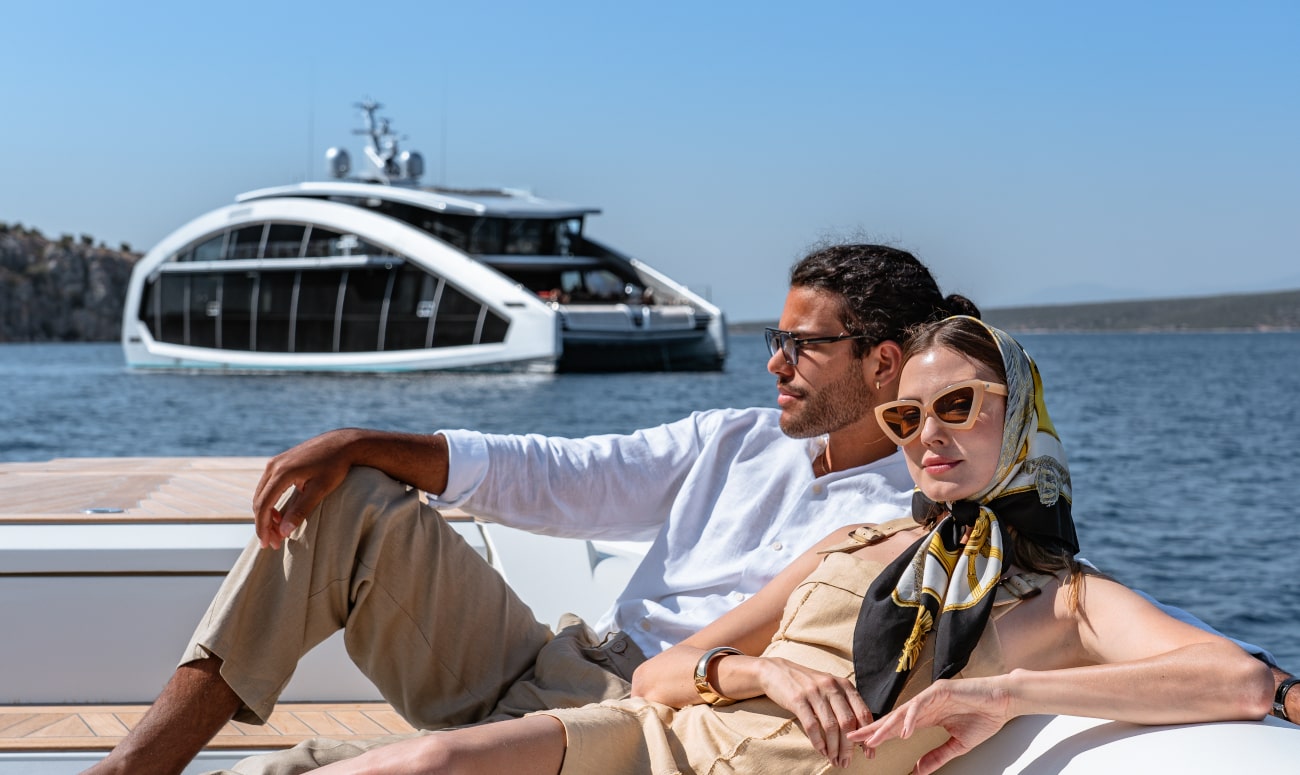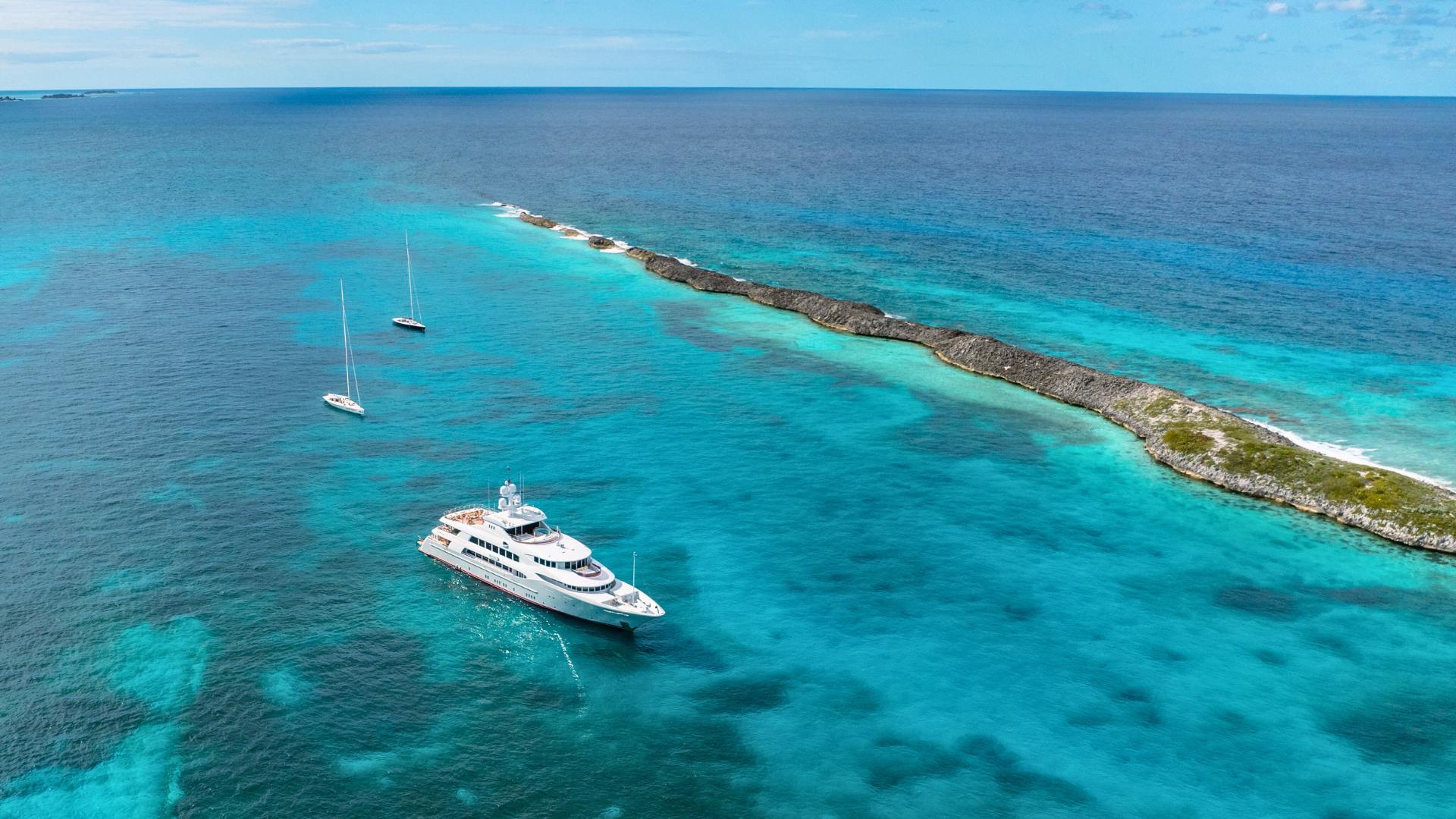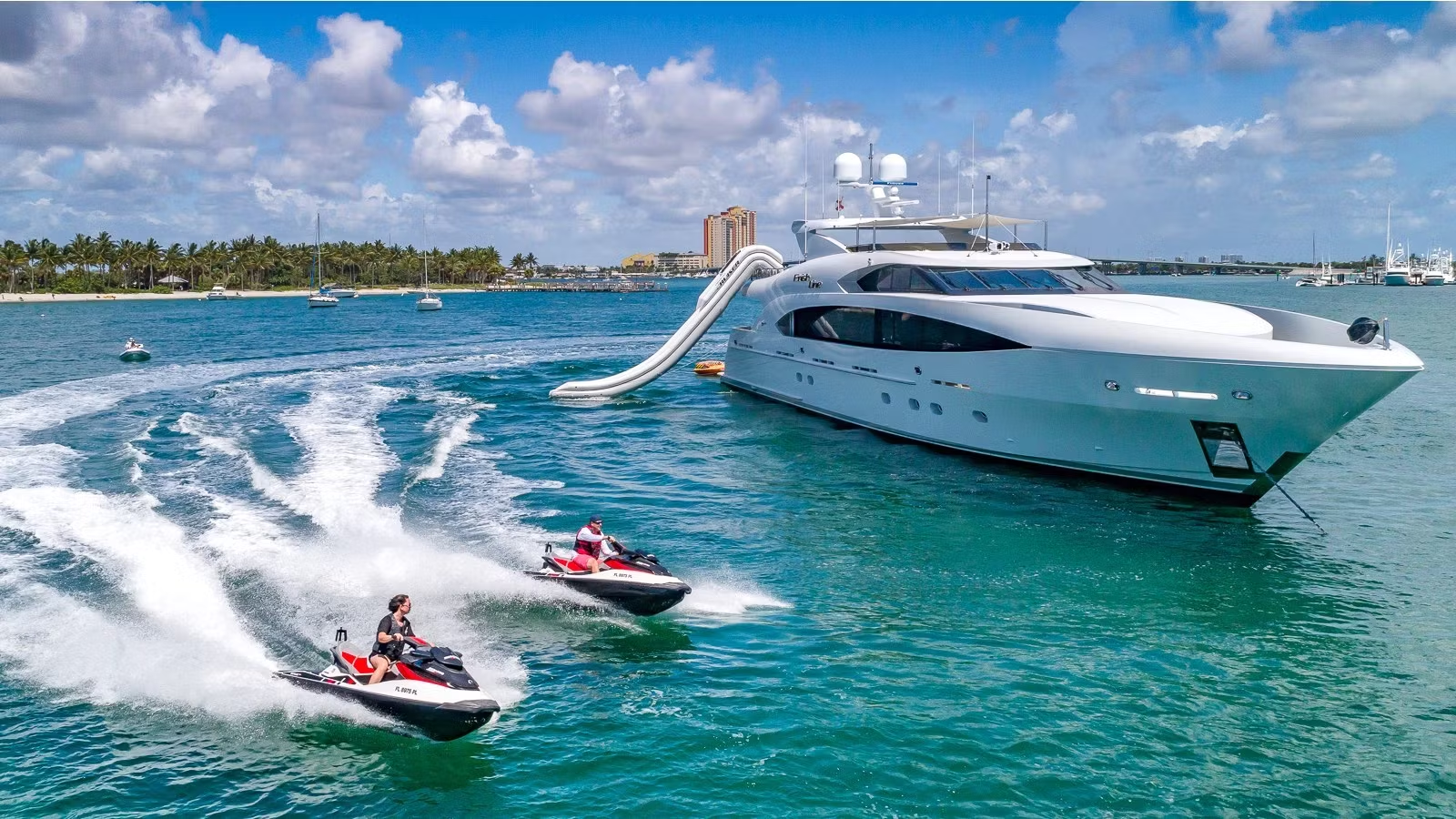
IYC Insights: What Makes A Destination Ideal For Yachting?
As much as yachting is about exploring worldwide destinations, those that are typically top of the list are the coastlines with crystal-clear waters and idyllic anchorage options. Behind the destination choice also lies another, more complex layer: whether a destination is practically ‘yacht-ready’. On first glance, many destinations around the world may be attractive for cruising, but there are several factors that should be considered. Here, we explore and provide insight into what makes a destination truly suitable for yachting.

Access: Water Depth And Yacht Draft
One of the most important questions to ask when assessing the capability of yachting activities in an area is whether or not yachts can get there. Firstly, this will depend on the depth of water in the particular anchorage or marina, and secondly, on the yacht's physical draft. Larger yachts with deeper drafts require deeper channels and anchorages with sufficient depth to avoid grounding, while yachts with smaller drafts will be able to access shallower waters.
Many worldwide locations, such as the South Pacific atolls, the Maldives, The Bahamas, and the Florida Keys, are prime examples of destinations that present challenges when cruising, anchoring, and berthing. As these coral reef systems and shallow passages often limit access to yachts with deeper drafts, and therefore, those yachts with shallower drafts are well-suited to cruise these specific areas. However, when water depth limits access, many yachts can anchor outside and rely on tender runs to access the waters and coastline.

Facilities: Marinas And Moorings
Facilities are also important for yachts operating in an area, and a destination's marina infrastructure is key in transforming it into a cruising hub. The destinations with well-equipped marinas offer a range of services to keep the yacht running smoothly, including access to power and freshwater, fuel docks, secure mooring spaces, and waste disposal facilities, which are more favourable than those without.
Popular yachting hotspots within the Mediterranean and Caribbean offer high-end infrastructure that caters to superyachts, providing valuable services and luxury amenities. Many of these renowned destinations regularly undergo refurbishment projects to maintain their attractiveness for yachts. Recent developments can be seen in Port Vauban, Antibes, Marina Port Vell in Barcelona, and plans for a new marina in Port Valencia, Spain. The new Habacoa project in the Bahamas, set to open in 2027, is another example of improving the infrastructure in an already popular cruising destination.
In contrast, many of the world's underdeveloped coastal areas are currently unable to support larger yachts. However, the marina landscape is consistently evolving with the influx of new and emerging superyacht destinations. One recent example is Saudi Arabia's Red Sea coastline. The NEOM development project has invested heavily in modern, luxury marina facilities, making it more appealing for yachts. There are also plans in motion for more off-the-beaten-track locations, such as Indonesia, with new marinas being built, including one in Bali set to open in 2026.

Regulations: Local Laws And Restrictions
Local laws and regulations, which are sometimes overlooked, can hugely impact the destination's yachting appeal. The countries that boast yachting-specific policies typically attract more, while those with more complex or restrictive regulations can discourage yachts.
Considerations when it comes to regulations include applying for cruising permits, complying with customs and immigration procedures, meeting flag state requirements, and adhering to specific environmental restrictions, such as limitations on anchoring and prohibitions in marine protected areas. Some regions require extensive paperwork and permit caps, particularly those that are more remote and environmentally sensitive, such as the Galapagos Islands and Antarctica.
Specific legislation in regions also impacts the ability and effectiveness of the charter market. Greece is a country that has undergone several amendments to its charter laws over the years, now enabling EU-flagged and non-EU-flagged yachts to charter under the e-Charter platform. Foreign-flagged yachts over 35 metres are also permitted to charter in Greece for a maximum of 28 days per year.

Safety: Safe And Secure Cruising
The safety and security of a destination are also a priority when understanding what makes a destination ideal for yachting. Countries experiencing geopolitical issues and piracy concerns may mean that yachts will avoid cruising these regions altogether or will require additional measures, such as onboard security personnel and heightened risk assessments. This can bring complexities, costs, and risks, making specific destinations less attractive for a yachting vacation.
Destinations with a reputation for safety naturally experience higher demand. They are more attractive, such as the Mediterranean, where countries within the region stand out as secure and well-regulated cruising grounds that offer peace of mind, as well as numerous opportunities for cruising.

Support: Service Systems Ashore
It isn't just the berthing available that is important for a yacht to thrive in a destination, but also the surrounding services to support the operations on offer. Notably, proximity to reliable and international transport hubs, such as private jet terminals and helicopter landing pads, improves accessibility and convenience, especially for guests arriving from worldwide destinations.
The availability of services for the yacht, such as provisions, maintenance facilities, medical services, and on-ground support teams, including yacht agents, is also important. These services provide the tools necessary for the ultimate yachting experience. Both the Caribbean and Mediterranean regions have very well-established yacht service networks. These provide yachts with the backup and assurance they need when operating out of different destinations. In turn, the emerging superyacht hubs are also considering these support systems with more yacht agencies expanding into the newer destinations as they become more popular.

Itineraries: Logistics And Planning
Typically, there will be an optimal season to visit destinations, with favourable weather conditions and wind making a cruising itinerary more appealing. For example, the summer months between May and September are ideal for the Mediterranean, while the winter months, from November to March, and outside the hurricane season are perfect for the Caribbean. Countries that host particular global events throughout the year can also contribute to their appeal, such as the Cannes Film Festival and the Monaco Yacht Show, both key events that attract yachts.
Once the time of year is chosen, a well-planned itinerary to complement the destination will include a variety of experiences that the destination offers, as well as a combination of adventurous activities, cultural attractions, and scenic opportunities. Ideally, a destination for yachting will also feature a range of anchorages that can accommodate water-based fun. Having short distances between other destinations is also a consideration, such as island-hopping the BVI's or throughout any of the Greek island chains.
Choosing where to enjoy a luxury yachting vacation involves striking a balance between attraction and practical considerations. The most appealing destinations with sufficient infrastructure, favorable regulations, and strong support systems are typically the best. Contact IYC's expert consultants today to discuss the yachting opportunities in your desired destination.
More From The Blog

As the luxury yacht charter industry continues to evolve and adapt, the end of the year is the perfect time to reflect on and learn from new developments so that we can best serve our clients.

Our expert consultants consistently monitor trends and developments in the yachting markets to help our clients find the best deals and opportunities. Here, IYC shares insights into why now is the perfect time to charter.

There is no time like the present to start planning for an unforgettable summer yacht charter in 2025 and no better advisor than the IYC experts to assist you in discovering the most breathtaking destinations and most exclusive experiences.